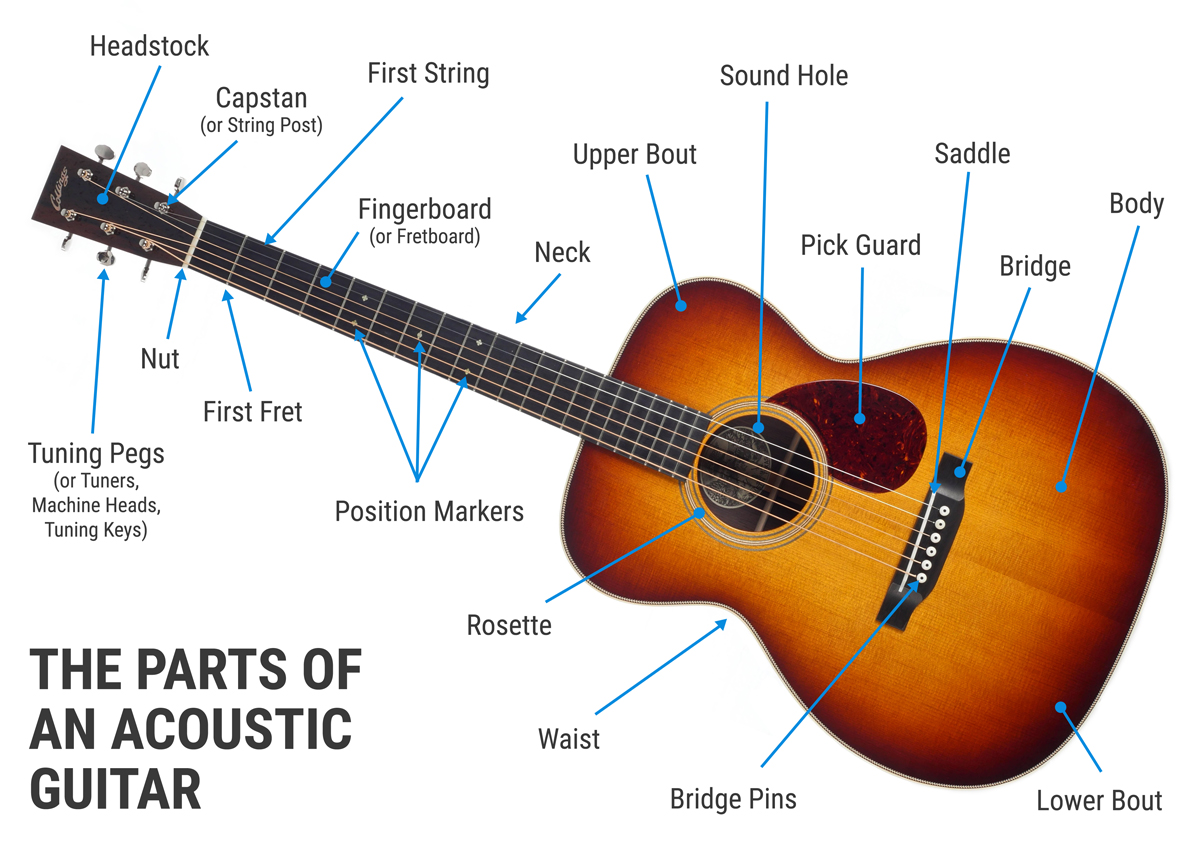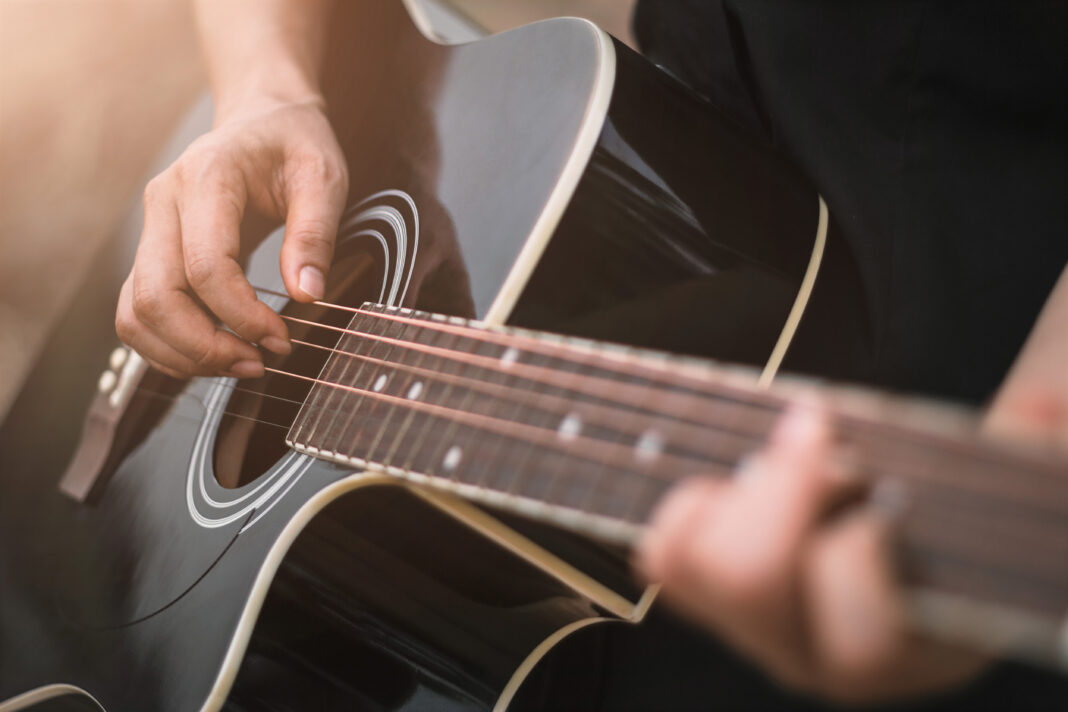The above-mentioned lyrics’ chord progressions may seem nonsensical to a person unfamiliar with how music is played. It is the same way someone unfamiliar with cooking would look at a recipe and instruct them. Chords are the ‘building blocks’ of music; they provide the harmonic element to music. Just like how the ingredients make up a dish, the chords make up music. While learning the guitar, focus is put on understanding and memorizing the chords, as they are what give the guitar its sound it needs.
Pressing the correct string at the correct place or not plucking a string are all needed to play a chord on the guitar. But this makes us wonder why pressing the string allows us to make a different sound? Why does leaving a string open, plucking a string while not pressing on it, help us in playing a chord?
“Don’t worry about a thing.”
Play the A chord
“‘Cause every little thing, gonna be alright”
Switch to the D chord and then back to the A chord
“Singin’ don’t worry, about a thing”
And now repeat the chords.
The String
The first component that affects the sound made by the guitar is the string. Sound is made of vibrations, and those vibrations are what our ears hear. A guitar string vibrating produces a sound, but several factors affect the sound a string makes.
The first is the thickness of the string. We all have seen guitars, some have 6 strings while others have 4, but each guitar’s string varies from one another in one thing: the thickness. The thickness of a string affects its pitch, or in other words, its frequency; the thicker a string is, the more mass and hence the fewer the vibrations, which leads to a low pitch. So, the thickness of a string affects the frequency of the sound produced.
The second factor is the length of the string. This is altered by pressing the string on the fretboard, the thinner end of a guitar, which reduces the length of the string. As the length of a string is shortened, it leads to the wavelength of the sound produced being reduced as well. This leads to the frequency of the sound being increased and hence affects the pitch as well.
The last main factor is the tension or tightness of the string. This can be varied by the pegs at the end of a guitar. The more tension on a string or the tighter a string is, the more it vibrates, which leads to a greater frequency.

The Body of Guitar
The second component that we are going to look at is the body of the guitar, the thicker end of the guitar. The purpose of the body is to push the air around the guitar upwards and downwards to make vibrations and hence make sound. For this, the surface area of the body needs to be big enough to vibrate a reasonable amount of air. The body is also made up of a thin, flexible material, i.e., wood, so it can effectively move forwards and backwards. The body is supported by braces, which are the internal structure of the guitar; they hold the body and help the top end vibrate.
The movement of the air around the guitar allows the sound to be transmitted to its surroundings. This is what contributes to us hearing the chords produced by the guitar.
The Sound Hole
Have you ever tried blowing into a whistle? If yes, then you know a sound is made as air leaves the small opening on top, but why? The sound is produced when the air vibrates as it leaves through the small opening. In the same manner, the sound hole of a guitar is also a component in the sound being produced. The air inside the sound hole vibrates as the strings are plucked. This amplifies the sound being made as the air moves forward and backward while also giving the guitar its bass or its low notes.
All these components combine to allow a guitar to make a sound. The chords that I mentioned at the start are formed by these factors. This teaches us that even daily objects that may seem inconsequential all have some science going on behind them. Therefore, the next time you ever sit down to listen to music or hear someone playing a guitar, try to remember all the little things that allow it to work for our enjoyment.
References:
- https://www.phys.unsw.edu.au/~jw/guitarintro.html
- https://www.soundpure.com/a/expert-advice/guitars/parts-of-an-acoustic-guitar/
- https://www.normans.co.uk/blogs/blog/which-is-better-acoustic-or-classical-guitar
- https://www.physicsclassroom.com/class/sound/lesson-5/Guitar-Strings
Also Read: It Begins with a Heartbeat: The Quiet Power of Science and Health in Healing a Nation from Within

Muhammed Ahmed is a high school student at Karachi Grammar School. He is an avid enthusiast of marine science, music, and scientific research. Ahmed also aims to participate in and author academic research in the future.

